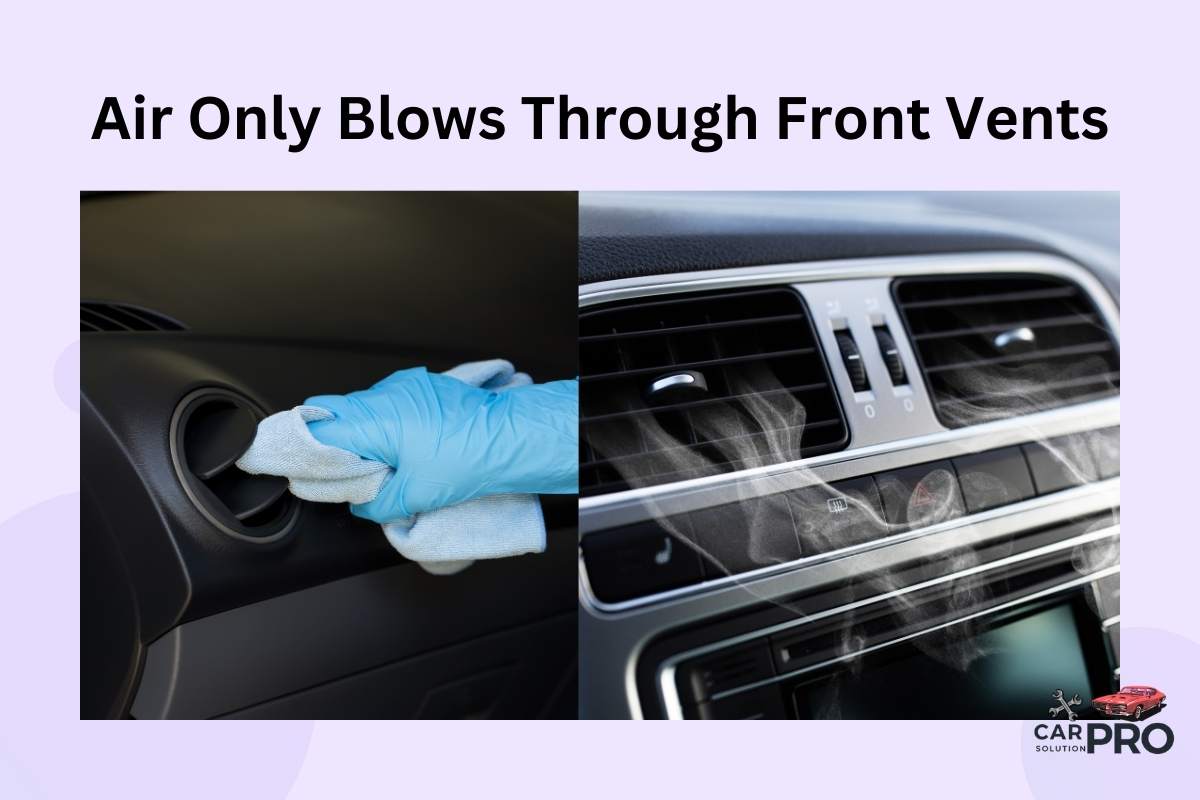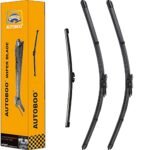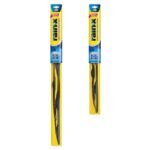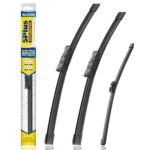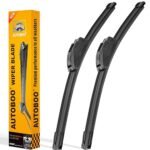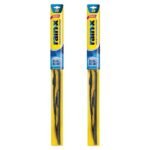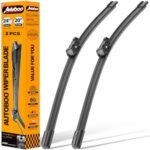Car owners often face the frustrating issue of air only blowing through the front vents. This problem can make driving uncomfortable, especially in extreme weather conditions. A faulty blend door actuator is a common cause of air only coming from the front vents. This small motor controls the direction of airflow in your car’s ventilation system.
Several factors can lead to this issue. A broken actuator, vacuum leaks, or electrical problems may prevent air from flowing through other vents. In some cases, a clogged cabin air filter or debris in the vents can also cause airflow problems.
Fixing this issue often requires professional help. A mechanic can diagnose the exact cause and make necessary repairs. Regular maintenance of your car’s HVAC system can prevent many airflow problems. This includes replacing filters and checking for leaks or damage.
Key Takeaways
- Faulty blend door actuators often cause air to only blow through front vents
- Professional diagnosis is usually needed to pinpoint and fix the exact issue
- Regular HVAC system maintenance can prevent many common airflow problems
Understanding Your Vehicle’s Ventilation System
Your car’s ventilation system controls airflow and temperature inside the vehicle. It uses various parts to move and direct air through different vents.
Components of the Ventilation System
The main parts of a car’s ventilation system include:
- Blower motor: Pushes air through the system
- Air ducts: Channels for air to travel through
- Vent doors: Control where air exits
- Actuators: Open and close vent doors
- Control panel: Lets you adjust settings
The blower motor is key for pushing air. Without it working properly, air won’t flow as intended.
Air filters clean the incoming air. They trap dust and debris to improve air quality inside the car.
How Airflow Is Directed Through Vents
Airflow direction depends on several factors:
- Control settings you choose
- Position of vent doors inside the system
- Condition of air ducts and seals
When you select a vent option, actuators move vent doors to direct air. For example, choosing “defrost” closes other vents and opens the defrost vents.
Vacuum lines or electronic signals control these movements in most cars. If these fail, air may only blow through one set of vents.
Clogged ducts or damaged seals can also affect airflow. Regular maintenance helps keep air flowing correctly to all vents.
Common Reasons for Airflow Issues
Air only blowing through front vents can be caused by several factors. These issues often stem from blocked air paths, faulty controls, or problems with the blower motor.
Obstructed Air Paths
Vent blockages are a common cause of airflow problems. Furniture or other objects may unknowingly block vents, restricting air movement.
Closed vents can also limit airflow. Sometimes people close vents in unused rooms and forget to reopen them.
Dirty air filters can significantly reduce airflow. As filters collect dust and debris, they become clogged, making it harder for air to pass through.
Clogged ductwork is another culprit. Over time, ducts accumulate dust and debris, narrowing the path for air to travel.
Malfunctioning Ventilation Controls
Faulty dampers can direct air incorrectly. These devices control airflow to different areas of the house and may malfunction, sending air only to front vents.
Thermostat issues can also cause airflow problems. If the thermostat isn’t communicating properly with the HVAC system, it may not activate all necessary components.
Zone control systems, when malfunctioning, may fail to open dampers to all areas. This can result in air only flowing to certain vents.
Blower Motor Failures
A weak or failing blower motor can’t push air effectively through the system. This can lead to reduced airflow, especially in vents farther from the unit.
Blower motor problems are often noticeable. You might hear strange noises or notice weak airflow from all vents.
Dirty blower wheels can’t move air efficiently. Regular maintenance helps prevent this issue and ensures proper airflow.
Electrical issues can also affect the blower motor. Faulty wiring or a bad capacitor can prevent the motor from running at full capacity.
Diagnostic Approaches
Finding the cause of air only blowing through front vents requires a systematic approach. This involves initial checks and more advanced inspection techniques.
Initial Assessment Steps
Start by checking the air flow controls. Make sure they’re set correctly for the desired vents. Turn the fan to different speeds and listen for unusual noises.
Next, inspect the cabin air filter. A clogged filter can restrict airflow. Replace it if it’s dirty or damaged.
Check fuses related to the HVAC system. A blown fuse can cause vent issues. Replace any burnt-out fuses.
Examine visible ductwork for obvious damage or blockages. Look for loose or disconnected ducts that could affect air distribution.
Professional Inspection Techniques
Blower motor testing is crucial. A faulty motor can limit air distribution. Professionals use specialized tools to check its performance.
Technicians inspect mode door actuators. These control airflow direction. Faulty actuators can cause air to only blow through certain vents.
Vacuum systems in older cars need testing. Leaks or faulty check valves can disrupt vent operation.
For modern vehicles, mechanics use diagnostic scanners. These tools check for errors in the HVAC control module.
Pressure testing the AC system helps identify refrigerant leaks. Low refrigerant can affect overall system performance.
Resolving Airflow Problems
When air only blows through front vents, fixing the issue often involves clearing blockages or repairing faulty components. These steps can restore proper airflow throughout the vehicle’s ventilation system.
Clearing Blockages
Blocked vents are a common cause of airflow problems. Check all vents for obstructions like debris, dust, or small objects. Remove any visible blockages carefully.
Clean or replace the cabin air filter. A clogged filter restricts airflow. Most vehicles allow easy access to this filter for regular maintenance.
Inspect the air intake for leaves, twigs, or other debris. This area is usually located near the base of the windshield. Clear any obstructions to ensure proper air intake.
Repairing or Replacing Components
A faulty mode door actuator can cause air to flow only through certain vents. This component controls the direction of airflow. If it’s malfunctioning, it may need replacement.
Check the blower motor for proper operation. A weak or failing blower motor can’t push air effectively through all vents. Listen for unusual noises or reduced fan speeds, which may indicate a problem.
Examine the ductwork for damage or disconnections. Loose or cracked ducts can lead to air leaks. Repair or replace damaged sections to restore proper airflow throughout the system.
Consider professional diagnosis if these steps don’t resolve the issue. A mechanic can perform a thorough inspection and identify more complex problems affecting the vehicle’s ventilation system.
Preventative Maintenance and Tips
Regular checks and proper maintenance can prevent air from only blowing through the front vents. These steps help keep your car’s ventilation system working correctly.
Regular Ventilation System Check-Up
Check your car’s ventilation system every 6 months. Look for cracks or damage in the air ducts. Clean or replace the cabin air filter regularly. This filter traps dust and debris, keeping the air clean.
Test all vent settings to ensure proper airflow. Listen for unusual noises when changing settings. These could indicate a problem with the blower motor or actuators.
Inspect the blower motor for signs of wear. A failing motor can cause uneven air distribution. Have a mechanic check the system if you notice any issues.
Tips to Maintain Optimum Function
Use your car’s air conditioning system regularly, even in cooler months. This keeps seals lubricated and prevents mold growth. Run the defrost setting for a few minutes each week to clear moisture.
Clean the vents with a soft brush or compressed air. This removes dust that can block airflow. Avoid using water, which can damage electrical components.
Check and maintain proper refrigerant levels. Low refrigerant can cause poor cooling and airflow issues. Have a professional inspect and recharge the system if needed.
Keep the area around the external air intake clear of leaves and debris. This ensures proper airflow into the system.
Frequently Asked Questions
Car air vents can sometimes behave strangely. Issues with airflow direction and temperature control often stem from problems with actuators, door mechanisms, or the HVAC control system.
Why does my car’s heater only blow air out of the front vents instead of the feet or defrost areas?
This issue often points to a faulty mode door actuator. The actuator controls air direction in the HVAC system. When it fails, air may get stuck blowing from only one set of vents.
A vacuum leak can also cause this problem in older vehicles. The vacuum system helps control air distribution.
What could cause some vents in my car to not blow air at all?
Blocked air ducts are a common culprit. Debris or small objects can obstruct airflow to specific vents.
A malfunctioning blower motor might also cause this issue. If the motor isn’t working correctly, it may not push air through all vents evenly.
Why does the AC in my vehicle only blow through the floor vents?
This typically indicates a problem with the mode door or its actuator. The mode door directs air to different vents.
A stuck or broken mode door can trap air in one position, like the floor vents. The HVAC control module may also be faulty, sending incorrect signals to the actuator.
Can a malfunctioning blend door actuator lead to air only coming out through certain vents?
Yes, a faulty blend door actuator can cause this issue. The blend door controls the mix of hot and cold air.
If it’s stuck, air may only flow through certain vents. This can result in uneven heating or cooling throughout the vehicle.
Why does the air conditioning in my Silverado only blow through the defrost vents?
In Silverados, this often indicates a problem with the mode door actuator or HVAC control unit. The mode door may be stuck in the defrost position.
A vacuum leak can also cause this in older Silverado models. Check for any hissing sounds under the dash.
What might be the reason for the dashboard’s air vents not functioning properly?
Clogged air filters can restrict airflow to dashboard vents. Regular filter replacement can prevent this issue.
Electrical problems, like blown fuses or faulty relays, can also affect vent function. These components control power to various parts of the HVAC system.
When you purchase a product through Amazon links on carsolutionpro.com, we may earn a small commission at no extra cost to you. This helps support the site and keep our content free. As an Amazon Associate, we earn from qualifying purchases made through our links.
